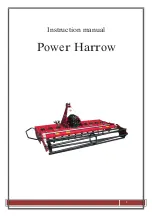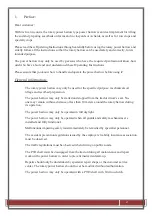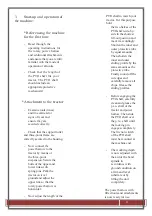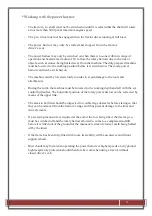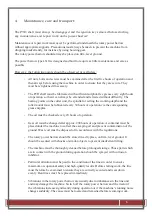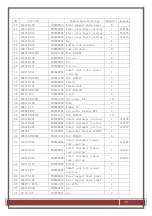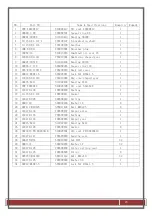
* Working with the power harrow
-
The tractor p.t.o. shaft must not be switched on until it is certain that the shaft will rotate
at not more than 540 rpm at maximum engine speed.
-
The p.t.o. drive must not be engaged when the tractor drives running at full load.
-
The power harrow may only be started and stopped from the tractor
driver’s seat.
-
The power harrow may only be switched on when there is no-one within its range of
operation and hazard area (radius of 10 m from the rotary harrow) due to the risk of
objects, such as stones, being hurled away from the machine. The duly prepared machine
must be lowered to the working position before it is switched on. The rotary power
harrow can then be switched on.
-
The machine must be lowered slowly in order to avoid damage to the tools and
attachments.
-
During the work, the machine must be lowered to the working depth and left with the set
control hydraulics. The horizontal position of the rotary power harrow can be corrected by
means of the upper link.
-
The areas to be tilled should be inspected for visible large obstacles before staring so that
they can be removed from the harrow’s range and thus prevent damage to the tines and
drive elements.
-
If a reversing manoeuvre is required at the end of the row being tilled, the tractor p.t.o.
must be switched off and the rotary harrow allowed to come to a complete standstill
before it is lifted out of the ground for the manoeuvre (risk of clods of earth being hurled
off by the tines).
-
If the frame has been fully fitted with tools, its stability will be assured even without
support wheels.
-
Dust clouds may form when operating the power harrow at higher speeds on dry ground.
Light respiratory protection should therefore be worn when using a tractor without
closed driver’s cab.
5
Summary of Contents for 1BQ1.3
Page 1: ...Instruction manual Power Harrow 1...
Page 10: ...6 Technical data 7 Safety Decals 10...
Page 11: ...11...
Page 14: ...14...
Page 16: ...16...

